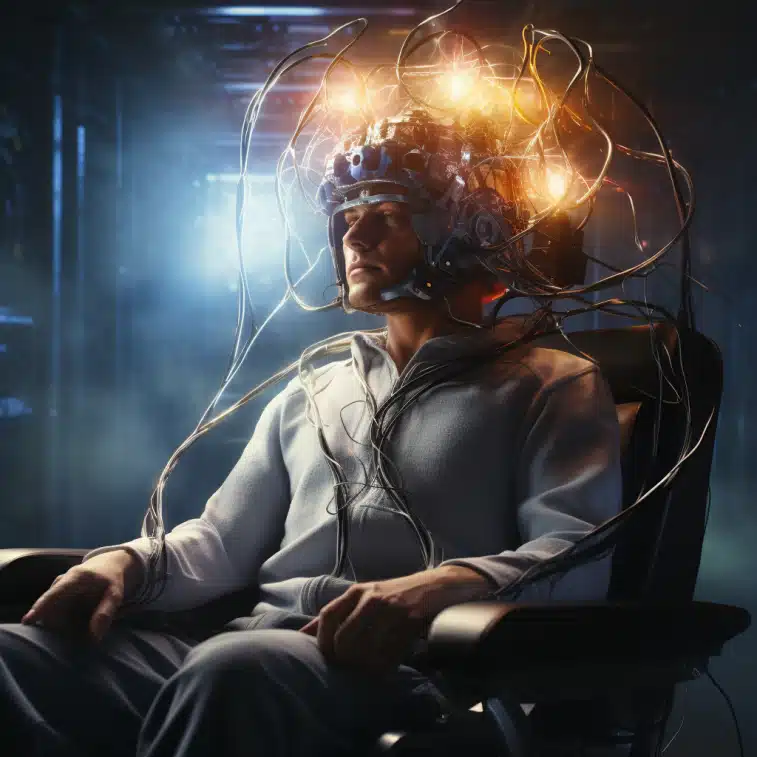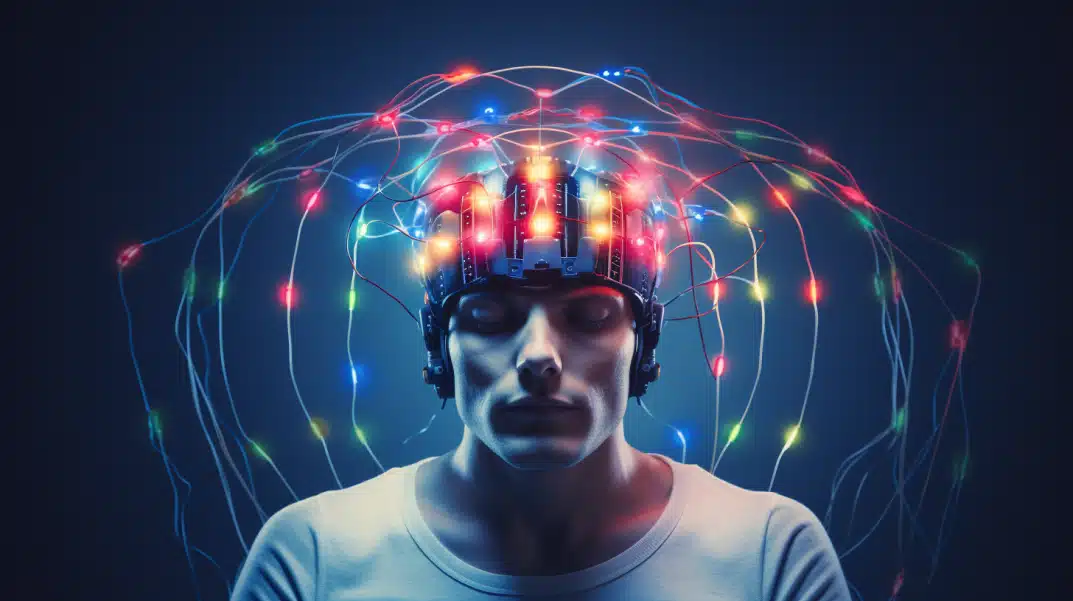A new meta-analysis found that continuous theta burst stimulation (cTBS), a novel form of brain stimulation therapy, does not appear to be more effective than sham (placebo) stimulation for treating symptoms of major depression.
Key Facts:
- cTBS is a type of repetitive transcranial magnetic brain stimulation that aims to modulate activity in certain brain regions implicated in depression
- The meta-analysis pooled data from 3 small randomized controlled trials with 78 total patients with major depressive disorder or bipolar disorder
- No significant differences were found between active and sham cTBS groups in improvement in depression scores or response rates
- cTBS was safe and well-tolerated, with no differences in side effects between groups
Source: J Affect Disord. (2023)
The Search for Novel Depression Treatments: rTMS (Transcranial Magnetic Stimulation)
Major depressive disorder is one of the leading causes of disability worldwide, affecting over 300 million people globally.
Unfortunately, currently available antidepressant medications are ineffective for nearly a third of depressed patients.
This has driven investigation into novel non-pharmacological treatments like brain stimulation techniques that aim to directly modulate the activity of mood-regulating brain circuits.
One such technique is repetitive transcranial magnetic stimulation (rTMS). rTMS uses electromagnetic coils placed against the scalp to deliver magnetic pulses that can either stimulate or suppress activity in specific brain regions.
High-frequency rTMS over the left frontal cortex aims to enhance activity in brain areas hypothesized to be underactive in depression.
Low-frequency rTMS over the right frontal cortex dampens down regions thought to be overactive.
A multitude of studies and meta-analyses have found rTMS to have significant if modest antidepressant effects superior to sham treatment.
However, standard rTMS requires 20-60 minutes of stimulation daily for up to 6 weeks to achieve results. This has led researchers to investigate ways to enhance rTMS’s effectiveness.
Optimizing Brain Stimulation: Theta Burst Protocols Emerge (cTBS)
One way researchers have tried streamlining rTMS is through theta-burst stimulation (TBS) protocols.
TBS delivers stimulation in intense bursts spaced by short pauses.
Animal and human studies have shown this pattern more powerfully and enduringly alters brain activity compared to standard rTMS.
TBS comes in two main forms – intermittent and continuous.
Intermittent TBS (iTBS) over the left frontal cortex aims to enhance cortical activity, while continuous TBS (cTBS) over the right frontal cortex suppresses overactivity.
An early open-label study in 2010 found that a 10-session course of cTBS resulted in a 64% depression response rate, comparable to antidepressants.
Small randomized controlled trials (RCTs) have had mixed results however.
To clarify cTBS’ efficacy for depression, researchers recently conducted the first meta-analysis on the topic, pooling data from RCTs comparing active cTBS to sham treatment.
The Meta-Analysis: No Advantage Found for Active cTBS

The meta-analysis ultimately included 3 double-blind RCTs with a total of 78 patients with major depression treated over 1-2 weeks.
About 62% had a diagnosis of major depressive disorder (MDD), while 38% had bipolar disorder currently experiencing a depressive episode.
Across the 3 studies, there were no significant differences found between active and sham cTBS groups in:
- Improvement in standardized depression rating scale scores
- Rates of response (defined as ≥50% improvement in scores)
- Rates of adverse effects like headache
- Study dropout rates
In other words, the meta-analysis did not find evidence that active cTBS was superior to placebo/sham stimulation for alleviating depressive symptoms over a short 1-2 week treatment course.
Limitations & Open Questions re: cTBS for Depression
The researchers highlight several limitations that may have influenced results.
The included studies had very small sample sizes and short treatment durations – this may fully explain the lack of superiority vs. sham groups.
Concomitant antidepressant medication use was allowed but not standardized.
And up to 38% of patients had treatment-resistant depression, which could have blunted cTBS effects.
They conclude that larger, longer RCTs are needed to definitively determine whether cTBS has utility for treating major depression.
If future research does find cTBS effective, head-to-head comparisons with standard rTMS protocols will also be important.
Several questions also remain regarding optimal TBS design parameters like stimulation intensity, target locations, bilateral versus unilateral treatment, and session frequency/duration.
Identifying subgroups of patients most likely to respond will also be key.
For now though, this meta-analysis found no evidence that cTBS is superior to sham treatment for depression – contrasting earlier open-label data.
So claims regarding its antidepressant efficacy should be viewed cautiously pending further controlled research.
Broader Context: The Ongoing Pursuit of Faster-Acting Antidepressant Treatments
While this meta-analysis represents an early setback, the appeal of brain stimulation for depression remains.
Treatments like TBS and rTMS that directly modulate neural circuit activity could theoretically achieve results faster than medications or psychotherapy.
But depression is a highly complex, heterogeneous disorder that won’t be remedied through a “one-size-fits-all” intervention.
While the right parameters and patient selection may yet yield subsets of depressed patients responsive to TBS, other non-invasive stimulation techniques like synchronized transcranial magnetic stimulation and magnetic seizure therapy show early promise too.
And innovative targets like the lateral orbitofrontal cortex implicated in rumination are also being investigated.
Ultimately, bank shots like psychedelic therapy and neural implants may prove most transformative.
For now, TBS for depression resides more in the “promising but unproven” category.
How the evidence unfolds will be fascinating to follow in this era of burgeoning interest and investment into rapid-acting interventions for mood disorders.
But prudent optimism rather than premature enthusiasm feels warranted.
References
- Study: Adjunctive continuous theta burst stimulation for major depressive disorder or bipolar depression: A meta-analysis of randomized controlled trials
- Authors: Dong-Bin Cai et al. (2023)







